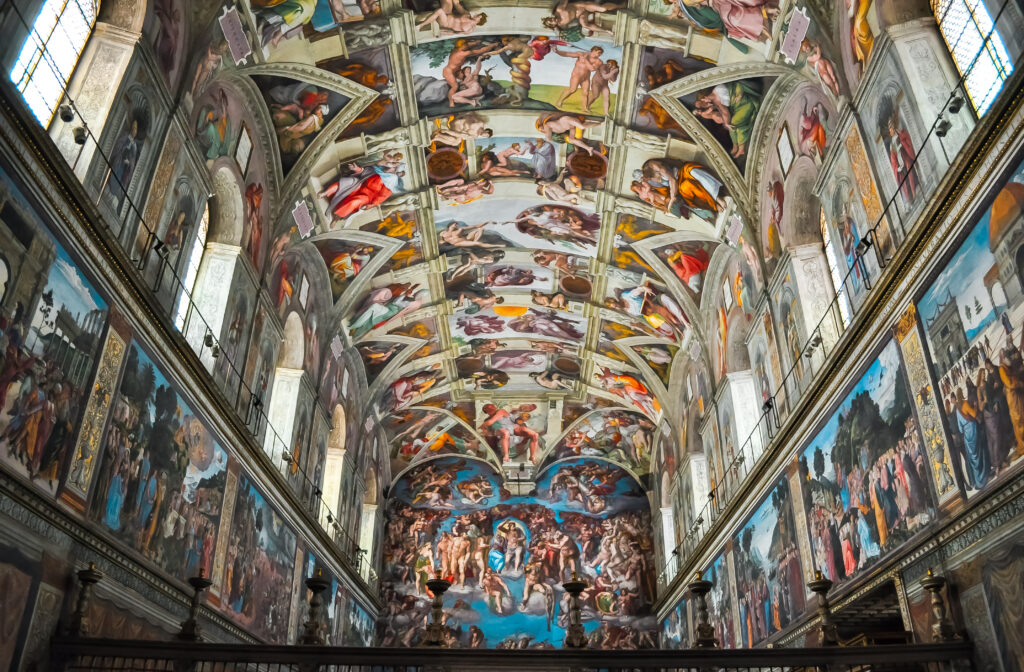The Vatican Museums (Musei Vaticani) are among the most famous and visited cultural institutions in the world. Located within Vatican City—the smallest independent state on Earth—they house one of the greatest collections of art and historical artifacts ever assembled. Visiting the Vatican Museums is not just a sightseeing activity; it is a journey through time, theology, and human creativity.

Origins and Early History
The story of the Vatican Museums begins in 1506, when Pope Julius II acquired the ancient marble statue Laocoön and His Sons. This Hellenistic masterpiece, discovered on Esquiline Hill in Rome, was displayed publicly in the Vatican, marking the first step toward what would become a vast collection. Successive popes, especially during the Renaissance and Baroque periods, expanded the holdings by acquiring sculptures, paintings, and artifacts from across Europe and beyond.
Pope Clement XIV officially founded the Vatican Museums in 1771, and his successor, Pope Pius VI, further developed the galleries and public access. Over centuries, additions such as the Pio-Clementine Museum, Gregorian Etruscan Museum, and Gregorian Egyptian Museum enriched the collection, making the Vatican Museums a comprehensive record of Western civilization and beyond.
Architectural Marvels and Layout
The Vatican Museums are not a single building but rather a complex of galleries, chapels, and courtyards. The entrance leads visitors through a series of corridors filled with ancient sculptures, Renaissance frescoes, and decorative masterpieces. Highlights include:
- The Gallery of Maps: A 120-meter-long hall adorned with 16th-century frescoed maps of Italy’s regions.
- The Raphael Rooms: A suite of papal apartments decorated by Raphael and his workshop, including the famous School of Athens, which embodies Renaissance humanism.
- The Pio-Clementine Museum: Home to classical sculptures like the Apollo Belvedere and the Belvedere Torso, which inspired Michelangelo.
- The Borgia Apartments: Once the residence of Pope Alexander VI, these rooms now display modern religious art.
- The Pinacoteca Vaticana (Picture Gallery): A collection of paintings including works by Giotto, Raphael, Leonardo da Vinci, and Caravaggio.
The Sistine Chapel
The crown jewel of the Vatican Museums is undoubtedly the Sistine Chapel. Built under Pope Sixtus IV and completed in 1481, the chapel is world-renowned for Michelangelo’s frescoed ceiling (1508–1512) and The Last Judgment on the altar wall (1536–1541). The ceiling’s nine central panels narrate stories from Genesis, including The Creation of Adam, one of the most iconic images in Western art. Today, the Sistine Chapel also serves as the site of the papal conclave, where new popes are elected under Michelangelo’s breathtaking vision.
Later Expansions and Modern Era
The Vatican Museums continued to grow into the 19th and 20th centuries. Popes Pius VII and Pius IX expanded the collections, while Pope John Paul II opened the Collection of Modern Religious Art in 1973. This modern wing features works by artists such as Van Gogh, Dalí, and Matisse, proving that the Vatican’s commitment to art spans beyond the Renaissance.
The museums have embraced digital technology in recent years, offering virtual tours and improved visitor facilities. They are also active in art conservation—preserving delicate frescoes, sculptures, and manuscripts for future generations.
Visitor Tips for an Unforgettable Experience
- Book tickets in advance: The Vatican Museums are among the busiest in the world; skip-the-line reservations are essential.
- Arrive early or late in the day: Early morning or evening entry reduces crowds.
- Dress appropriately: As part of the Vatican, modest clothing (covered shoulders and knees) is required.
- Allow plenty of time: Set aside at least half a day to explore thoroughly.
- Consider a guide: A knowledgeable guide can reveal stories and details you might otherwise miss, enriching your visit.
Why the Vatican Museums Are Unmissable
The Vatican Museums are more than a collection—they are a testament to humanity’s search for beauty, meaning, and connection across millennia. From ancient Roman statues to Renaissance masterpieces, from Egyptian mummies to modern art, the museums reflect both the continuity and evolution of human creativity.
Standing under Michelangelo’s ceiling in the Sistine Chapel or in front of Raphael’s School of Athens, you’re not just observing art—you’re participating in a legacy that has shaped Western culture. For travelers, the Vatican Museums are a profound and awe-inspiring experience, offering insights into art, history, and spirituality all under one roof.

